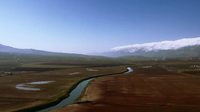Intro
Water in crisis
There is no life without water and that's why this valuable natural resource concerns us all. Even though Switzerland has enough water, it’s still committed to find solutions for the global water problems.
Cycle
What does WA – S – H stand for?
Water
Water
Projects
Sanitation
Sanitation
Projects
Hygiene
Hygiene
Projects
Conflict
Conflict prevention
Next
Links
Tensions in Lebanon
An additional focus of Switzerland's commitment is therefore conflict prevention. Both the Human Security Division and the SDC maintain close cooperation with the NGO International Alert.
International Alert providing training on dialogue and conflict resolution, training female community leaders to resolve local conflicts in their communities.
Access to clean water is not only a major potential for conflict in the Bekaa Das Engagement der DEZA im Libanon 4 Valley. Throughout the Middle East sufficient access to clean water has become a key target in the fight against poverty, as well as in bring peace and political stability. This is the credo of the Blue Peace Initiative, which was launched in 2010 and is supported by Switzerland.
Ukraine
Now, the people of Donbass are separated by the so- called contact line, which has the length of the German-French border and is a bit longer than the distance between Geneva and Scoul.
More than a third of the affected people are over the age of 60. Most of the water supply systems in Ukraine originate from the former Soviet Union. One single system often supplies millions of people with water.
Three components are required to supply water in a conflict zone like in eastern Ukraine:
1. Infrastructure
2. Qualified personnell 3. Sufficient energy and chemicals
Chad
Lebanon
The arrival of the refugees is not the only challenge local water authorities are facing. The water sector has been neglected for many years resulting in a poor infrastructure and insufficient management.
Menstrual taboo
Start-up programme Lebanon
CEWAS, a Swiss NGO supported by the SDC, is also a member of the Blue Peace Network.
"We have showed some refugees the prototype, we've had a lot of feedback from the refugees where some of them were very interested in owning one and using it."
Mohamad Fakkraddine
Ebola in DRC
In 2018, Switzerland committed CHF 14.6 million to provide food and protection in an effort to alleviate the suffering of the displaced people in the East and centre of the country.
Wastewater Management in Lebanon
In a first step, this unit is taking samples at the inflow and outflow of the wastewater plants.
S-Rohingyas
What happens when hundreds of thousands of people need a toilet
In an effort to improve the situation, the SDC funds a project of the NGO Solidarités International (SI).
















 Water in crisis
Water in crisis

































































